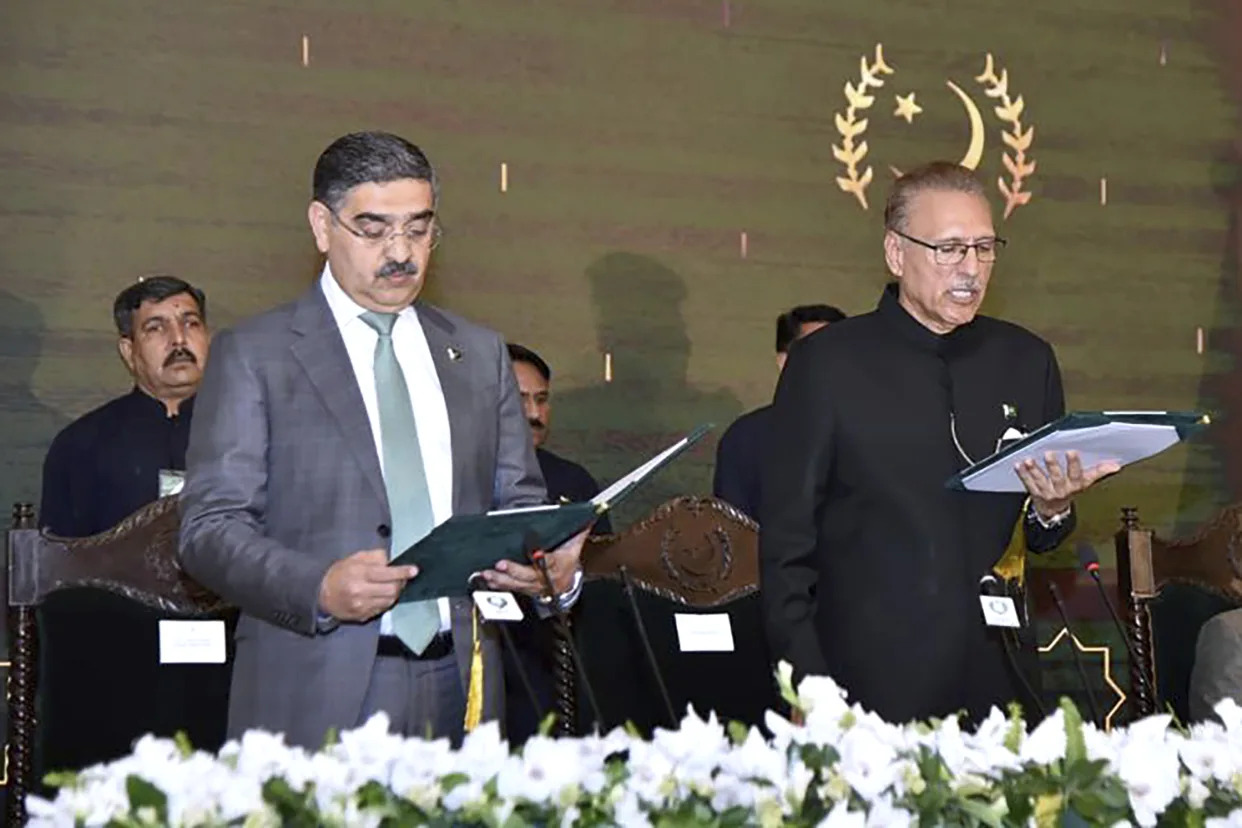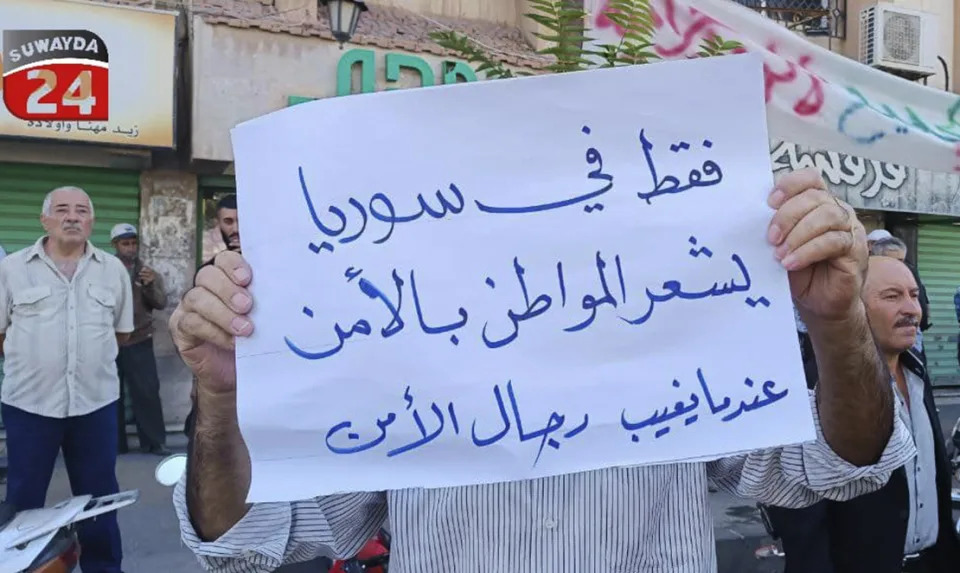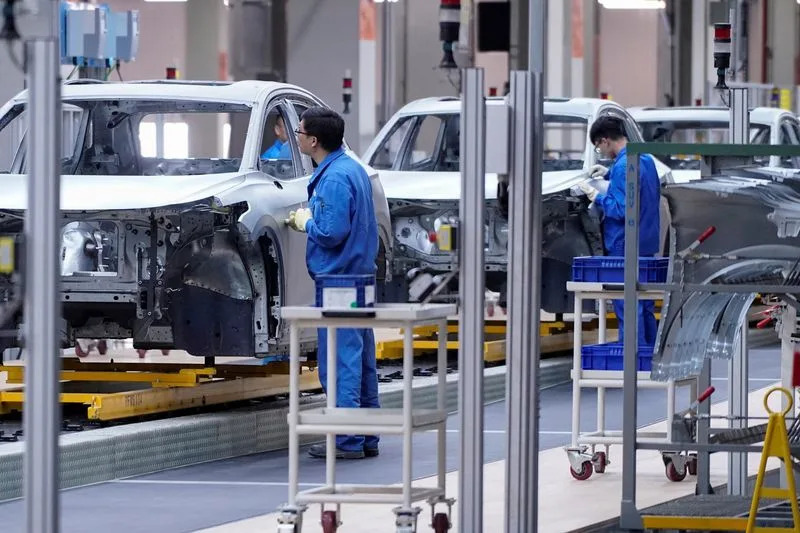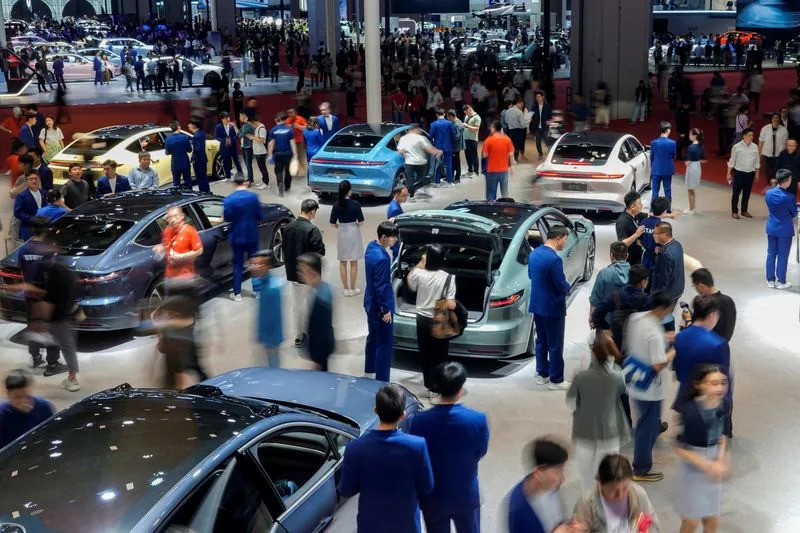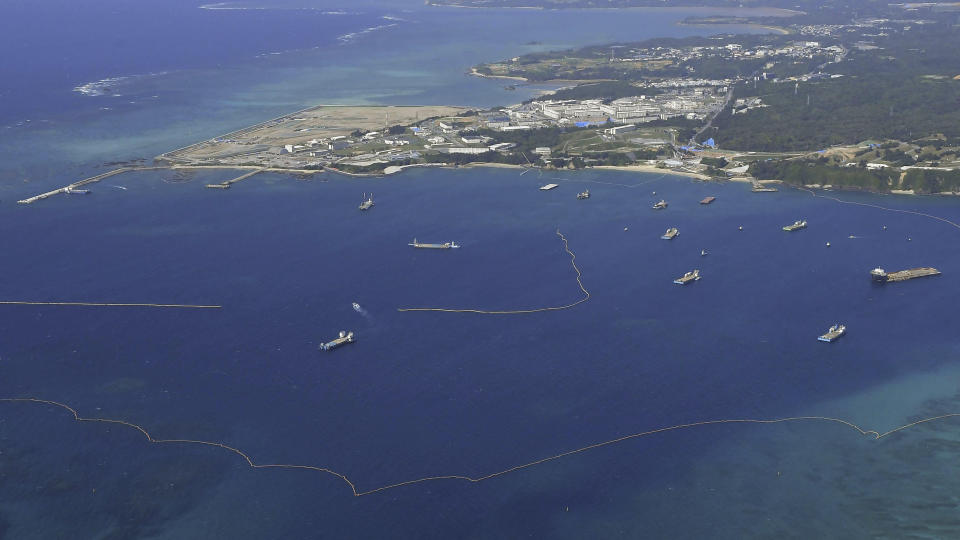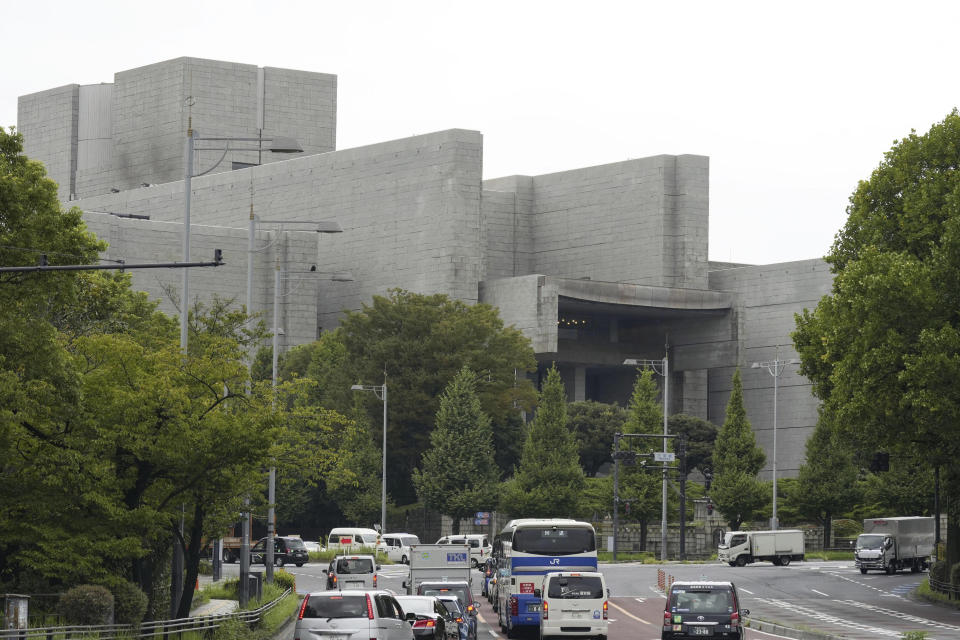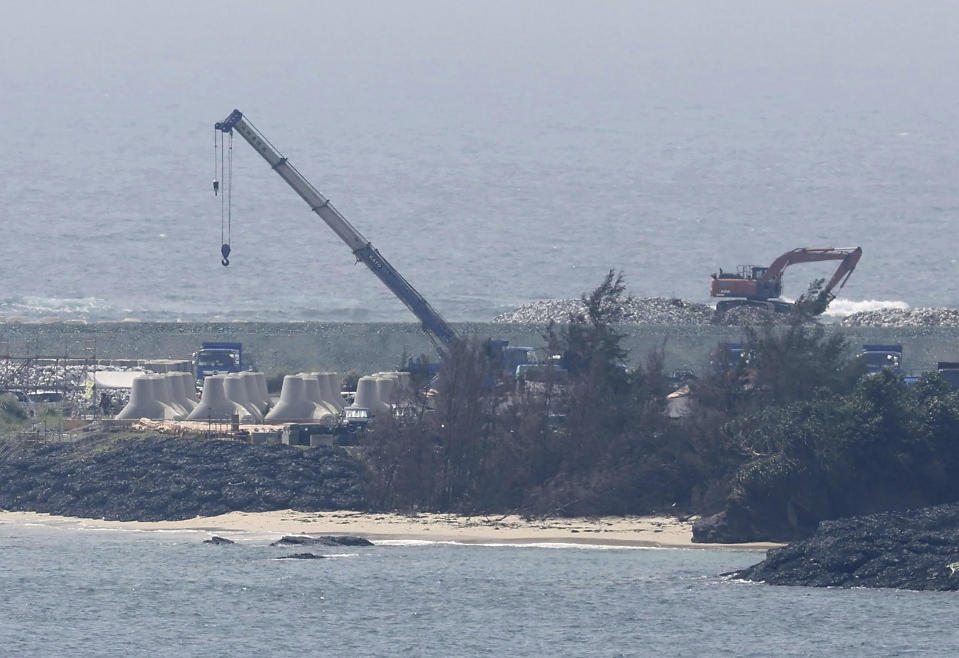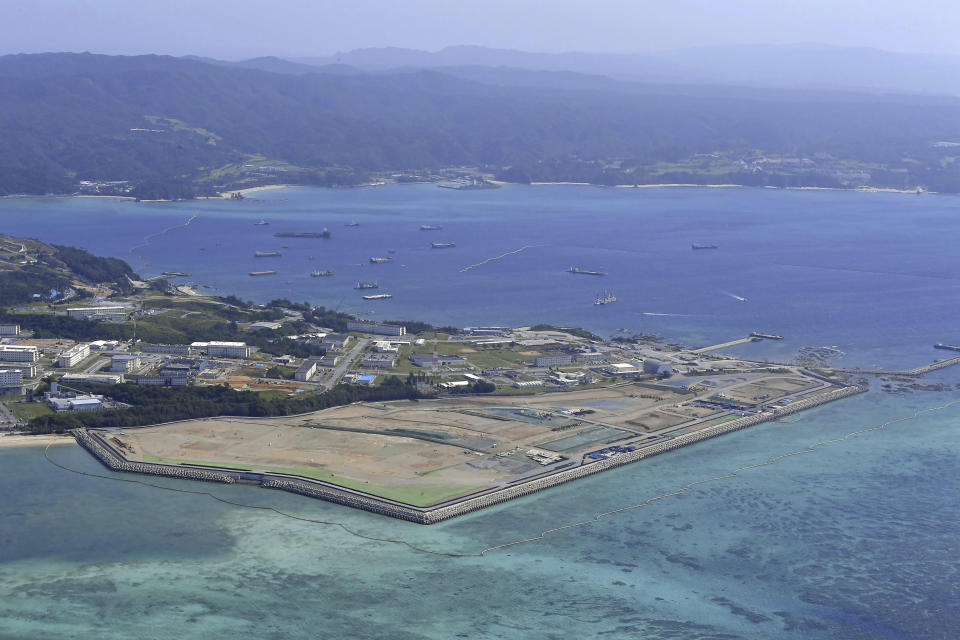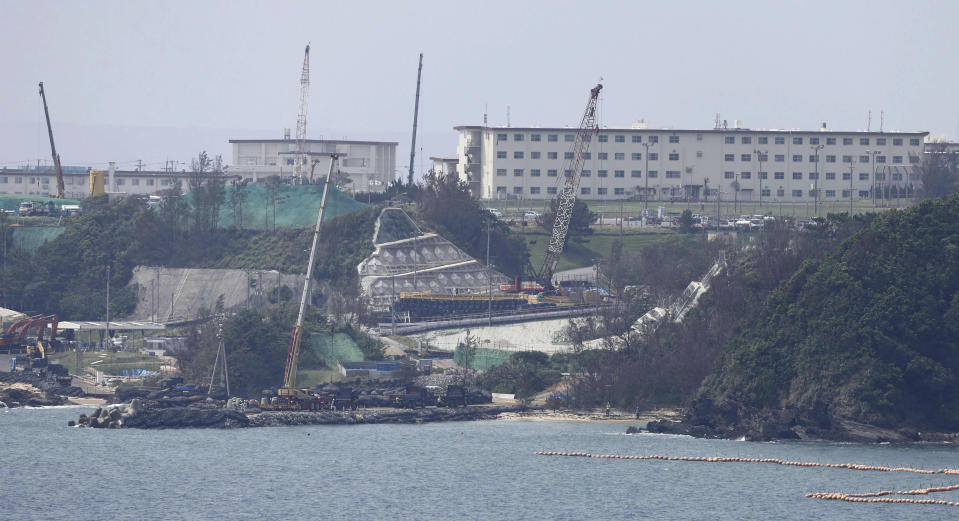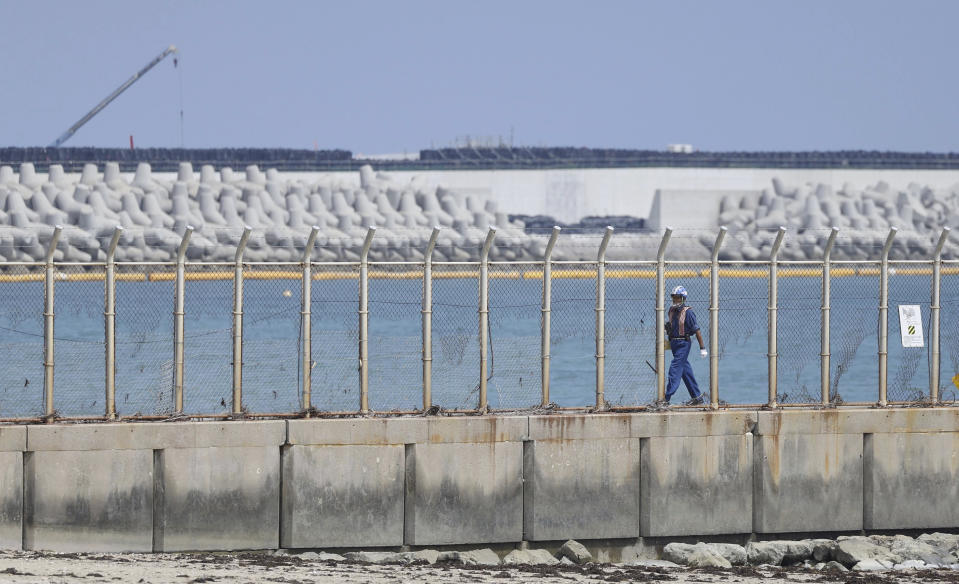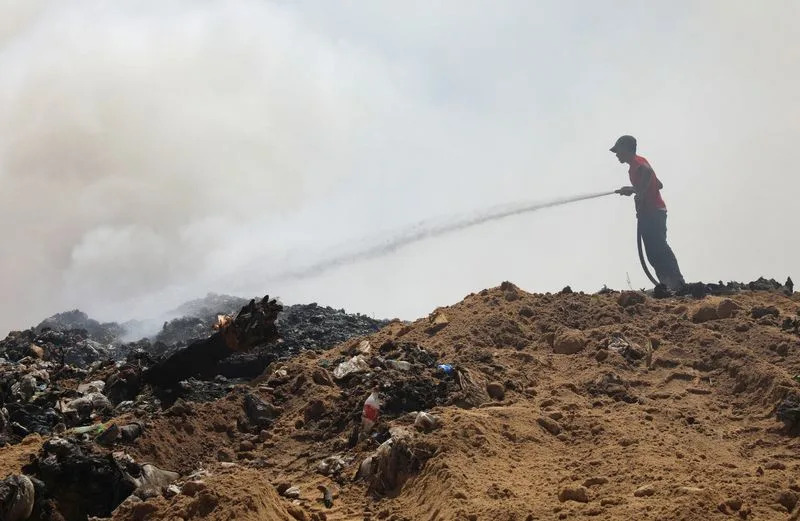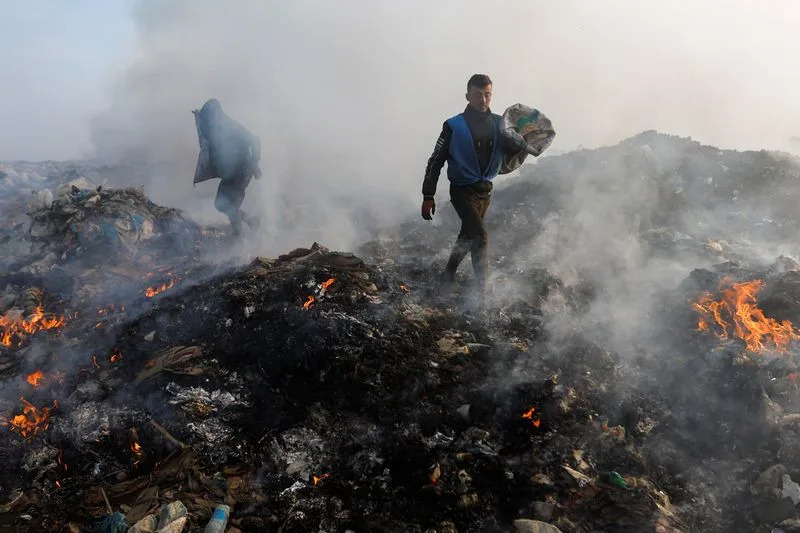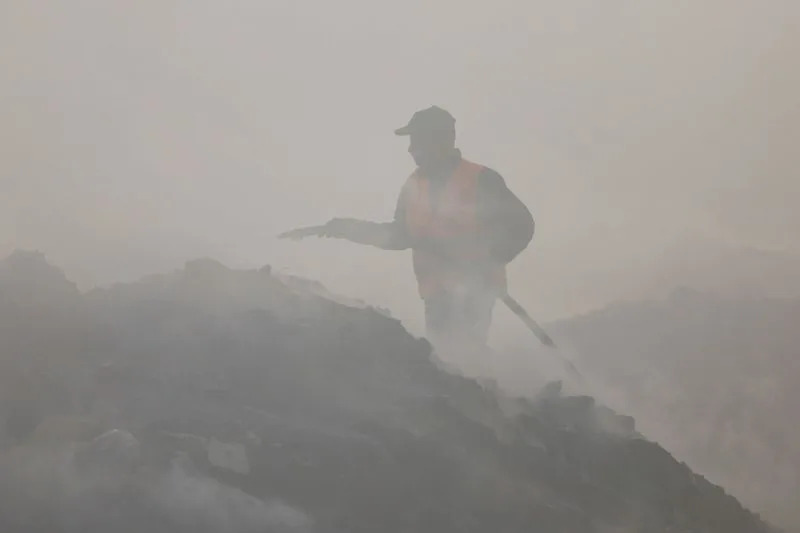TOM KRISHER
Updated Mon, September 4, 2023
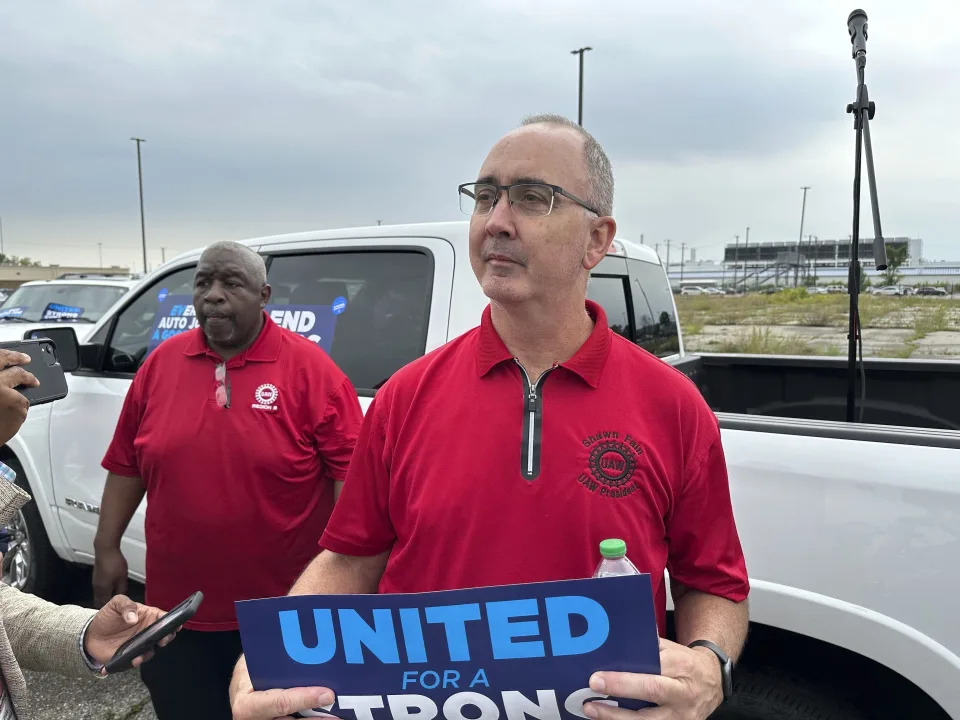
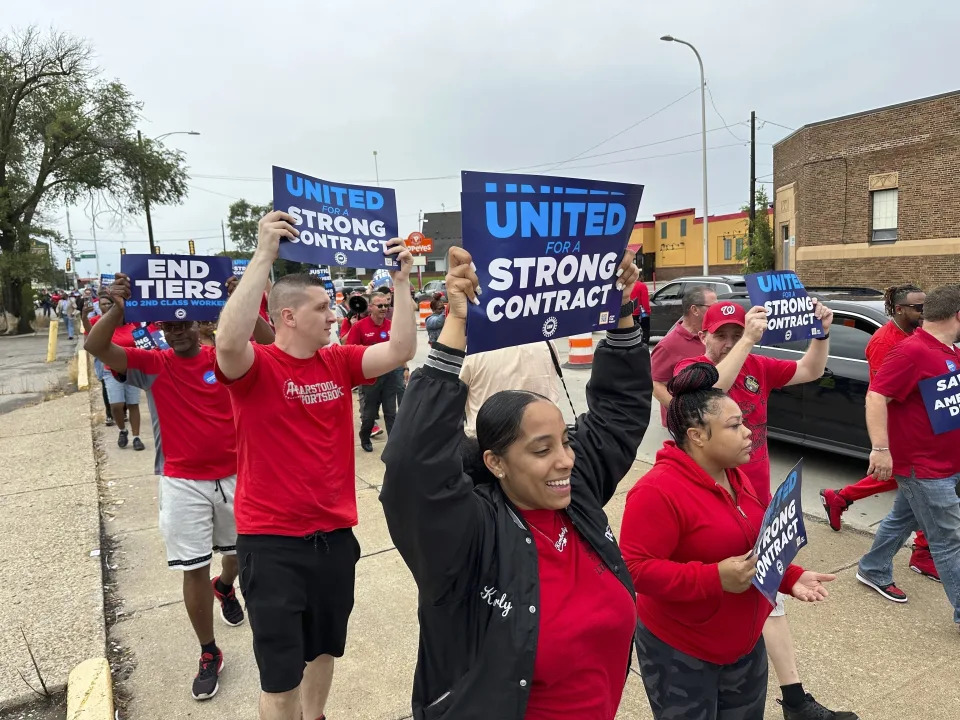
1 / 14
United Auto Workers President Shawn Fain holds up a sign at a union rally held near a Stellantis factory Wednesday, Aug. 23, 2023, in Detroit. The demands that a more combative United Auto Workers union has made of General Motors, Stellantis and Ford — demands that even the UAW's president has called “audacious” — are edging it closer to a strike when its current contract ends Sept. 14. (AP Photo/Mike Householder, File)
DETROIT (AP) — A 46% pay raise. A 32-hour week with 40 hours of pay. A restoration of traditional pensions.
The demands that a more combative United Auto Workers union has pressed on General Motors, Stellantis and Ford — demands that even the UAW's own president calls “audacious” — are edging it closer to a strike when its contract ends Sept. 14.
The automakers, which are making billions in profits, have dismissed the UAW's wish list. They argue that its demands are unrealistic at a time of fierce competition from Tesla and lower-wage foreign automakers as the world shifts from internal combustion engines to electric vehicles. The wide gulf between the sides could mean a strike against one or more of the automakers, which could send already-inflated vehicle prices even higher.
A potential strike by 146,000 UAW members comes against the backdrop of increasingly emboldened U.S. unions of all kinds. The number of strikes and threatened strikes is growing, involving Hollywood actors and writers, sizable settlements with railroads and major concessions by corporate giants like UPS.
Shawn Fain, who won the UAW’s presidency this spring in the first direct election by members, has set high expectations and assured union members that they can achieve significant gains if they are willing to walk picket lines.
In a speech to a Labor Day parade crowd in Detroit on Monday, Fain said that if the companies don’t come up with a fair contract, “come Sept. 14, we’re going to take action to get it by any means necessary.”
Fain has characterized the contract talks with Detroit automakers as a form of war between billionaires and ordinary middle-class workers. Last month, in an act of showmanship during a Facebook Live event, Fain condemned a contract proposal from Stellantis as “trash” — and tossed a copy of it into a wastebasket, “where it belongs,” he said.
Over the past decade, the Detroit Three have emerged as robust profit-makers. They've collectively posted net income of $164 billion over the past decade, $20 billion of it this year. The CEOs of all three major automakers earn multiple millions in annual compensation.
Speaking last month to Ford workers at a plant in Louisville, Kentucky, Fain complained about one standard for the corporate class and another for ordinary workers.
“They get out-of-control salaries," he said. "They get pensions they don’t even need. They get top-rate health care. They work whatever schedule they want. The majority of our members do not get a pension nowadays. It’s crazy. We get substandard health care. We don’t get to work remotely.”
UAW members have voted overwhelmingly to authorize its leaders to call a strike. So, too, have Canadian auto workers, whose contracts end four days later and who have designated Ford as their target.
The UAW hasn't said whether it will select one target automaker. It could strike all three, though doing so could deplete the union's strike fund in under three months.
On the other hand, if a strike lasted even just 10 days, it would cost the three automakers nearly a billion dollars, the Anderson Economic Group has calculated. During a 40-day UAW strike in 2019, GM alone lost $3.6 billion.
Last week, the union filed charges of unfair labor practices against Stellantis and GM, which it said have yet to offer counterproposals. As for Ford, Fain asserted that its response, by rejecting most of the union’s demands, “insults our very worth.”
All three automakers have countered that the union's charges are baseless and that they're seeking a fair deal that would allow them to invest in the future.
Marick Masters, a business professor at Wayne State University in Detroit, suggested that the strong U.S. job market and the companies' outsize profits have given Fain leverage in negotiations. In addition, he noted, the automakers are poised to release a slew of new electric vehicles that would be delayed by a strike. And they have only a limited supply of vehicles to withstand a prolonged walkout.
“They are vulnerable,” Masters said.
“The question really is," he said, "are the parties willing to move on some of these things at the table? That hasn't been evident yet.”
Even Fain has described the union's proposals as “audacious” in demanding the restoration of traditional defined-benefit pensions for new hires; an end to tiers of wages; pension increases for retirees; and — perhaps boldest of all — a 32-hour week for 40 hours of pay.
Currently, UAW workers who were hired after 2007 don't receive defined-benefit pensions. Their health benefits are less generous, too. For years, the union gave up general pay raises and lost cost-of-living wage increases to help the companies control costs. Though top-scale assembly workers earn $32.32 an hour, temporary workers start at just under $17. Still, full-time workers have received profit-sharing checks ranging this year from $9,716 at Ford to $14,760 at Stellantis.
At Detroit’s Labor Day Parade, workers said a strike appears likely now.
Jason Craig, a worker at a Stellantis parts warehouse near Detroit, said his company appears most likely to be the strike target, but he said the union might go to Ford because it seems more family-oriented. Fain reiterated Monday that all three companies remain strike targets.
Perhaps the biggest issue blocking a contract agreement is union representation at 10 EV battery plants that the companies have proposed. Most of these plants are joint ventures with South Korean battery makers, which want to pay less.
“These battery workers deserve the same wage and salary standards that generations of auto workers have fought for," Fain told members.
The union fears that because EVs are simpler to build, with fewer moving parts, fewer workers will be needed to assemble them. In addition, workers at combustion engine and transmission plants will likely lose jobs in the transition; they'll need a place to go.
Fain, a 54-year-old electrician who came out of a Chrysler factory in Kokomo, Indiana, is among several labor leaders across the economy who have been escalating their demands and flexing their muscles. So far this year, 247 strikes have occurred involving 341,000 workers — the most since Cornell University began tracking strikes in 2021, though still well below the numbers during the 1970s and 1980s.
Masters suggested that the automakers wouldn't be able to quickly replace striking workers. The tight job market, diminished interest in manufacturing jobs and comparatively modest wages would make it difficult to hire enough workers.
Some auto workers regard the UPS contract, with a $49-an-hour top wage for experienced drivers, as a benchmark for their negotiations. Others say they're just hoping to get near that figure.
But automakers say a generous settlement would stick them with costs far above their competitors' just as they start producing more EVs. The inability to bring Hyundai-Kia, Nissan, Volkswagen, Honda and Toyota factories into the union has weakened the UAW's leverage, said Harry Katz, a labor professor at Cornell.
If you include the value of their benefits, workers at the Detroit 3 automakers receive around $60 an hour. The corresponding figure at foreign-based automakers with U.S. factories is just $40 to $45, Katz said. Much of the disparity reflects pensions and health care.
If the Detroit companies end up with higher labor costs, they'll pass them on to consumers, making vehicles more expensive, said Sam Fiorani, an analyst with AutoForecast Solutions, a consulting firm.
“More than half of the vehicles built in the U.S. are in nonunion plants,” he said. “So if you raise the price to build a unionized vehicle, you could price yourself out of competition with vehicles already built in North America."
A strike of more than a couple of weeks would reduce still-tight supplies of vehicles on Detroit automakers' dealer lots. With demand still strong, prices would rise.
The UAW's members are “reminding management that management can’t operate those factories without a settlement,” Katz said.
Masters and Katz say there's still time to settle without a strike. Katz predicts a settlement short of UPS numbers, possibly with 3% general pay raises plus cost-of-living adjustments, increased company contributions to 401(k) accounts for newer workers and faster transitions to top pay.
That said, Katz suggested, Fain has to back up his tough talk: “He’s got to prove himself."
____
AP Writers Bruce Schreiner in Louisville, Kentucky, and Christopher Rugaber in Washington contributed to this report.
DETROIT (AP) — A 46% pay raise. A 32-hour week with 40 hours of pay. A restoration of traditional pensions.
The demands that a more combative United Auto Workers union has pressed on General Motors, Stellantis and Ford — demands that even the UAW's own president calls “audacious” — are edging it closer to a strike when its contract ends Sept. 14.
The automakers, which are making billions in profits, have dismissed the UAW's wish list. They argue that its demands are unrealistic at a time of fierce competition from Tesla and lower-wage foreign automakers as the world shifts from internal combustion engines to electric vehicles. The wide gulf between the sides could mean a strike against one or more of the automakers, which could send already-inflated vehicle prices even higher.
A potential strike by 146,000 UAW members comes against the backdrop of increasingly emboldened U.S. unions of all kinds. The number of strikes and threatened strikes is growing, involving Hollywood actors and writers, sizable settlements with railroads and major concessions by corporate giants like UPS.
Shawn Fain, who won the UAW’s presidency this spring in the first direct election by members, has set high expectations and assured union members that they can achieve significant gains if they are willing to walk picket lines.
In a speech to a Labor Day parade crowd in Detroit on Monday, Fain said that if the companies don’t come up with a fair contract, “come Sept. 14, we’re going to take action to get it by any means necessary.”
Fain has characterized the contract talks with Detroit automakers as a form of war between billionaires and ordinary middle-class workers. Last month, in an act of showmanship during a Facebook Live event, Fain condemned a contract proposal from Stellantis as “trash” — and tossed a copy of it into a wastebasket, “where it belongs,” he said.
Over the past decade, the Detroit Three have emerged as robust profit-makers. They've collectively posted net income of $164 billion over the past decade, $20 billion of it this year. The CEOs of all three major automakers earn multiple millions in annual compensation.
Speaking last month to Ford workers at a plant in Louisville, Kentucky, Fain complained about one standard for the corporate class and another for ordinary workers.
“They get out-of-control salaries," he said. "They get pensions they don’t even need. They get top-rate health care. They work whatever schedule they want. The majority of our members do not get a pension nowadays. It’s crazy. We get substandard health care. We don’t get to work remotely.”
UAW members have voted overwhelmingly to authorize its leaders to call a strike. So, too, have Canadian auto workers, whose contracts end four days later and who have designated Ford as their target.
The UAW hasn't said whether it will select one target automaker. It could strike all three, though doing so could deplete the union's strike fund in under three months.
On the other hand, if a strike lasted even just 10 days, it would cost the three automakers nearly a billion dollars, the Anderson Economic Group has calculated. During a 40-day UAW strike in 2019, GM alone lost $3.6 billion.
Last week, the union filed charges of unfair labor practices against Stellantis and GM, which it said have yet to offer counterproposals. As for Ford, Fain asserted that its response, by rejecting most of the union’s demands, “insults our very worth.”
All three automakers have countered that the union's charges are baseless and that they're seeking a fair deal that would allow them to invest in the future.
Marick Masters, a business professor at Wayne State University in Detroit, suggested that the strong U.S. job market and the companies' outsize profits have given Fain leverage in negotiations. In addition, he noted, the automakers are poised to release a slew of new electric vehicles that would be delayed by a strike. And they have only a limited supply of vehicles to withstand a prolonged walkout.
“They are vulnerable,” Masters said.
“The question really is," he said, "are the parties willing to move on some of these things at the table? That hasn't been evident yet.”
Even Fain has described the union's proposals as “audacious” in demanding the restoration of traditional defined-benefit pensions for new hires; an end to tiers of wages; pension increases for retirees; and — perhaps boldest of all — a 32-hour week for 40 hours of pay.
Currently, UAW workers who were hired after 2007 don't receive defined-benefit pensions. Their health benefits are less generous, too. For years, the union gave up general pay raises and lost cost-of-living wage increases to help the companies control costs. Though top-scale assembly workers earn $32.32 an hour, temporary workers start at just under $17. Still, full-time workers have received profit-sharing checks ranging this year from $9,716 at Ford to $14,760 at Stellantis.
At Detroit’s Labor Day Parade, workers said a strike appears likely now.
Jason Craig, a worker at a Stellantis parts warehouse near Detroit, said his company appears most likely to be the strike target, but he said the union might go to Ford because it seems more family-oriented. Fain reiterated Monday that all three companies remain strike targets.
Perhaps the biggest issue blocking a contract agreement is union representation at 10 EV battery plants that the companies have proposed. Most of these plants are joint ventures with South Korean battery makers, which want to pay less.
“These battery workers deserve the same wage and salary standards that generations of auto workers have fought for," Fain told members.
The union fears that because EVs are simpler to build, with fewer moving parts, fewer workers will be needed to assemble them. In addition, workers at combustion engine and transmission plants will likely lose jobs in the transition; they'll need a place to go.
Fain, a 54-year-old electrician who came out of a Chrysler factory in Kokomo, Indiana, is among several labor leaders across the economy who have been escalating their demands and flexing their muscles. So far this year, 247 strikes have occurred involving 341,000 workers — the most since Cornell University began tracking strikes in 2021, though still well below the numbers during the 1970s and 1980s.
Masters suggested that the automakers wouldn't be able to quickly replace striking workers. The tight job market, diminished interest in manufacturing jobs and comparatively modest wages would make it difficult to hire enough workers.
Some auto workers regard the UPS contract, with a $49-an-hour top wage for experienced drivers, as a benchmark for their negotiations. Others say they're just hoping to get near that figure.
But automakers say a generous settlement would stick them with costs far above their competitors' just as they start producing more EVs. The inability to bring Hyundai-Kia, Nissan, Volkswagen, Honda and Toyota factories into the union has weakened the UAW's leverage, said Harry Katz, a labor professor at Cornell.
If you include the value of their benefits, workers at the Detroit 3 automakers receive around $60 an hour. The corresponding figure at foreign-based automakers with U.S. factories is just $40 to $45, Katz said. Much of the disparity reflects pensions and health care.
If the Detroit companies end up with higher labor costs, they'll pass them on to consumers, making vehicles more expensive, said Sam Fiorani, an analyst with AutoForecast Solutions, a consulting firm.
“More than half of the vehicles built in the U.S. are in nonunion plants,” he said. “So if you raise the price to build a unionized vehicle, you could price yourself out of competition with vehicles already built in North America."
A strike of more than a couple of weeks would reduce still-tight supplies of vehicles on Detroit automakers' dealer lots. With demand still strong, prices would rise.
The UAW's members are “reminding management that management can’t operate those factories without a settlement,” Katz said.
Masters and Katz say there's still time to settle without a strike. Katz predicts a settlement short of UPS numbers, possibly with 3% general pay raises plus cost-of-living adjustments, increased company contributions to 401(k) accounts for newer workers and faster transitions to top pay.
That said, Katz suggested, Fain has to back up his tough talk: “He’s got to prove himself."
____
AP Writers Bruce Schreiner in Louisville, Kentucky, and Christopher Rugaber in Washington contributed to this report.

